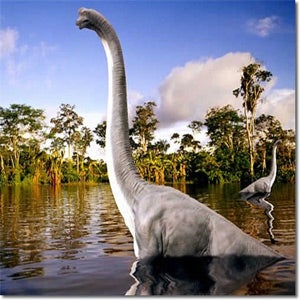Last Night's TV: Planet Dinosaur/BBC1<br />Live Rugby World Cup/ITV1

Your support helps us to tell the story
From reproductive rights to climate change to Big Tech, The Independent is on the ground when the story is developing. Whether it's investigating the financials of Elon Musk's pro-Trump PAC or producing our latest documentary, 'The A Word', which shines a light on the American women fighting for reproductive rights, we know how important it is to parse out the facts from the messaging.
At such a critical moment in US history, we need reporters on the ground. Your donation allows us to keep sending journalists to speak to both sides of the story.
The Independent is trusted by Americans across the entire political spectrum. And unlike many other quality news outlets, we choose not to lock Americans out of our reporting and analysis with paywalls. We believe quality journalism should be available to everyone, paid for by those who can afford it.
Your support makes all the difference.John Hurt, whose recent CV includes a stint playing the Great Dragon in Merlin, was a good choice as the narrator for Planet Dinosaur. Not only is there an existing association between those tones and huge reptilian creatures, but the voice itself sounds as if it was laid down sometime in the Jurassic. Human time has nothing to do with it. We're talking geology here – aeons of compression and sedimentation transforming the organic into something millennially (and minerally) ancient. It's the vocal equivalent of the Burgess Shales, and when it tells you that we're currently living through a "golden age of dinosaur discovery" it sounds as if it's been around long enough to know from personal experience. That "golden age", incidentally, was one explanation for why the BBC is having another crack at animated dinosaurs. The other, the voice told us, was the new opportunities supplied by "the latest imaging technology".
He meant CGI and bone scans and that kind of thing, but it might equally have applied to the images on screen because, 12 years on from Walking with Dinosaurs, techniques in CGI have come on quite a bit. Not only do we know more about the dinosaurs but we can resurrect them more convincingly. Naturally, the A-listers get all the real money spent on them. There were some walk-on parts for duck-billed Ouranosauri here – taking the part of lunch for the apex predators – and it was noticeable that they still had that arthritic, moonwalk gait that used to be a feature of all animated dinosaurs. But the Spinosaurus was another matter altogether. Far bigger than a Tyrannosaurus rex and with a mouth like Gordon Ramsay's knife-rack, the Spinosaurus got digital star treatment, every ripple of its flank and every gluey strand of its saliva registered on screen.
I'm not sure whether anything you see in these programmes isn't the product of a hard disk. It looked at one point as if a real crocodile had been montaged into a fight sequence and there are moments when the graphics seem to include photographs of real fossil remains, but it's all so polished and jazzed up that it's hard to tell. And, far from enhancing the excitement of the content, that oddly seems to veil it. The problem is that knowledge and science generally take second place to B-movie spectacle. Take the troubled relationship between the Spinosaurus and the Onchopristis, for example. The latter was a giant sawfish and one long sequence here offered a speculative reconstruction of how it ended up in the belly of a Spinosaurus. It was, I'm sure, a real achievement in terms of ray-tracing and transparency algorithms. But it was less exciting than the scholarly explanation of how we know that one dinosaur ate the other, which came about because sawfish vertebrae and barbs have been discovered stuck in the fossilised jaws of Spinosaurus skulls.
Similarly, the palaeontological evidence for the battles between rival Carcharodontosauri – tooth marks on a skull that match the bite pattern of other fossils – struck me as being far more engrossing than the animation that brought a combat back to life, despite the martial brass and pounding drums they dub on to the soundtrack. Perhaps I'm alone in this and most people tune in for a scientifically grounded version of Godzilla versus Rodan. But I find it hard to believe that anyone mutters, "I wish the dinosaur fights had been longer and there'd been less facts", when the credits finally roll.
If you really do like watching prehistoric giants running full tilt into each other you must be in clover right now because the Rugby World Cup coverage seems to offer little else. Yesterday's early-morning match was Scotland versus Georgia, a fixture that looked as if it required the attendance of the Invercargill riot squad, rather than one small referee. Well, probably not that small actually, since the players are so vast that normal human perspective goes askew. You gasp at the scale of one man and then the sky goes dark as another the size of a redwood tree falls on his head. The blunt impact involved is astounding. After one infringement yesterday, the on-screen graphics informed you the penalty had been for "Obstruction (Truck and Trailer)", which I understand is a technical rugby term but could just as well have been an attempt to register the axle weight of those involved in the collision. One day somebody may unearth the fossilised remains of these behemoths and attempt to reconstruct, from their welts and cracks and lesions, how it was that they earned a living when they still walked the Earth. They're going to laugh at the scientist who suggests they were just playing a game.
Join our commenting forum
Join thought-provoking conversations, follow other Independent readers and see their replies
Comments